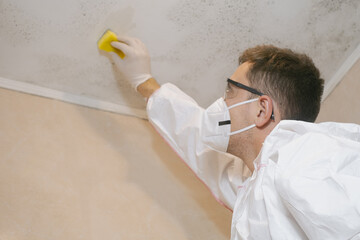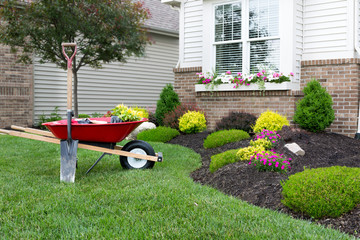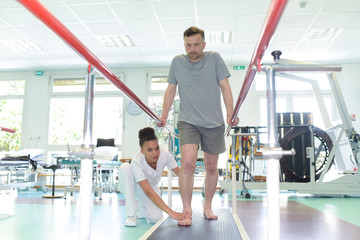Mold Remediation Provo is a process that removes infested materials and treats them with antifungal solutions. It also addresses the source of moisture that promoted mold growth.
This type of work should only be performed by experienced and certified professionals. A decontamination room is set up for workers to use before and after entering the contaminated area.
Moisture detection is a crucial step in mold remediation. Mold spores thrive in humid environments, and even after a thorough clean, they can remain undetected on surfaces that are still damp. Moisture meters help professionals pinpoint moisture pockets that may have remained behind walls or in hard-to-reach areas. These tools can also find hidden sources of moisture such as condensation, water leaks, or insufficient ventilation. Moisture mapping helps professionals focus their efforts to dry affected areas, improving the effectiveness and speed of remediation.
Mold grows on and infiltrates building materials, causing damage and posing health risks for occupants. Many mold spores are airborne, and prolonged exposure can cause respiratory problems and exacerbate existing allergies. Mold spores can also trigger more severe health issues in individuals with compromised immune systems.
A visual inspection can reveal signs of visible mold, such as a musty odor, discoloration, and slimy or flaky buildup. However, mold spores can also hide in places you can’t easily see. Hidden mold often occurs on the back side of wallpaper or paneling, behind drywall, inside ductwork, in ceiling tiles, and within rugs or carpets.
Professional inspectors use non-destructive moisture meters to assess the condition of building materials, including walls, floors, and ceilings. These handheld devices work based on electrical resistance, conductivity, or capacitance principles and can identify excessive moisture levels in building materials. They can also pinpoint the source of moisture such as water leaks, insufficient insulation, or poor ventilation.
In addition to moisture detection, professionals use air and surface sampling to determine the type of mold present and its extent of contamination. This information informs the remediation process by establishing the scope of the problem, identifying possible causes (e.g., leaks, flooding, or improper ventilation) and implementing solutions (e.g., cleaning, drying, or dehumidifying). These steps can significantly reduce costs and time spent in a project, minimizing damage and maintaining property value. They can also minimize health risks for occupants by detecting and mitigating mold-related toxins. For safety reasons, professionals isolate the area using heavy-duty plastic sheeting to prevent cross-contamination.
Cleaning
Oftentimes, non-structural materials with mold growth will need to be removed and disposed of. This includes things like drywall, insulation, flooring and wood materials. Mold spores can easily become airborne during this process, so it is important that it is done properly. Specialized cleaning agents can be used to ensure that the mold spores are dead, and the affected area is completely cleaned.
Depending on the type of mold, different cleaning solutions may be needed. For example, black mold (Serratia Marcescens) typically requires the use of a biocide to kill the fungus and prevent it from returning. This will also minimize the amount of spores released during the remediation process.
Other types of mold, such as Alternia and Aspergillus (both referred to as “household mold”), do not require the use of a biocide and can be killed using traditional cleaning methods. These include spraying and wiping with a disinfectant. These can be purchased at any home improvement store and are usually made from natural ingredients.
Before beginning the cleanup, the affected areas should be isolated from the rest of the home to minimize spore transfer. An anteroom, which can be accessed through an existing door or window, should be created to allow workers to change protective clothing and use the HEPA vacuum without contaminating the entire home. This will help keep the cost of the cleanup down and reduce the risk of cross contamination.
The next step in the cleaning process is removing and bagging contaminated materials. This will typically include drywall and insulation with mold growth, which will need to be double bagged before disposal. Porous items such as rugs and fabrics that have been affected by mold will also need to be taken out of the home for special “micro-cleaning” with a solution designed to kill mold and prevent it from returning.
After the contaminated materials have been removed, an inspection should be conducted to ensure that the mold growth has not caused any structural damage. If it has, repairs will need to be completed before the affected areas can be returned to use. Once the area has been inspected and repaired, air testing will need to be performed to ensure that there are no lingering levels of mold spores in the home.
Dehumidifying
Mold spores are always in the air, but they only grow when there is excess moisture to help them thrive. Dehumidifiers help reduce humidity levels, which can make it hard for mold spores to thrive.
If you suspect that you have a mold problem in your home, contact a professional. They will use advanced detection tools like moisture meters and humidity gauges to locate problem areas. Then, they can use specialized cleaning equipment and chemical treatments to remove the mold and prevent future outbreaks.
After the cleaning step, it is important to dry the space. The dehumidifier will help remove the excess moisture and allow the spaces to be re-occupied in a more safe and clean environment. Once the space is dry, the spores can no longer thrive.
While dehumidifiers are great at preventing mold growth, they are not a replacement for the cleaning and moisture detection steps. Mold will continue to grow if the water source is not dealt with. Contacting a professional restoration company will ensure that the mold and moisture are taken care of for good.
Depending on the type of mold, the cleanup process will vary. However, the basic steps include containment, removing and bagging contaminated items, cleaning non-porous surfaces, and using antifungal and antimicrobial treatments. Ideally, the space affected by the mold will be contained with double-layered polyethylene sheeting and sealed off from surrounding areas with fans to create negative air pressure. A decontamination chamber or airlock should be used to separate the clean and contaminated spaces during entry into and exit from the area for maximum safety and efficiency.
In addition to using a containment area, it is also important to wear protective gear including masks, gloves, and eye protection. Lastly, it is recommended to take an oxygen test before beginning the cleanup in a confined space such as a crawlspace or pipe chase. These tests will determine if the level of oxygen is adequate and prevent workers from experiencing hypoxic conditions. This is especially important if the work area is located in older buildings where asbestos and other chemicals may be present.
Restoration
Mold is a type of fungus that thrives in damp environments. While there are many different types of mold, some of them can cause problems if they come into contact with humans or animals. Mold spores are everywhere in the environment and can be found on things like dead leaves, grass clippings, stale food, and more. There are also certain varieties of mold that can be dangerous for health, such as Stachybotrys chartarum (black mold), which is toxic and can cause a range of health problems.
Mold remediation involves a number of different steps to remove the mold and restore the area. This can include a thorough cleaning and dehumidification of affected areas, the removal and disposal of any materials that are heavily damaged by the mold, and the use of preventive measures to control moisture and improve ventilation.
Containment is the first step in any mold remediation process. This involves putting up barriers to isolate the mold from other parts of the home and using fans to create negative pressure. This can be particularly important if the contaminated area is in an attic or crawl space.
A containment chamber or airlock is also a good idea, as this will separate the clean area from the contaminated area and help to ensure that airborne spores are not spread during the process. This should be sealed with polyethylene sheeting and should have a slit for entry and exit on each side.
Once the area is contained, a variety of cleaning methods and fungicides may be used to remove the mold. This can vary depending on the size of the infestation, the type of mold, and the surfaces involved. Cleaning may involve scrubbing, using a power washer, or removing and throwing away any porous materials that are badly damaged by the mold.
During this process, it is important to wear protective equipment, such as respirators and gloves. This will protect you from the toxins released by the mold as it is being removed. Once the area has been cleaned and sanitized, it should be dried and dehumidified to ensure that all mold spores are killed.







